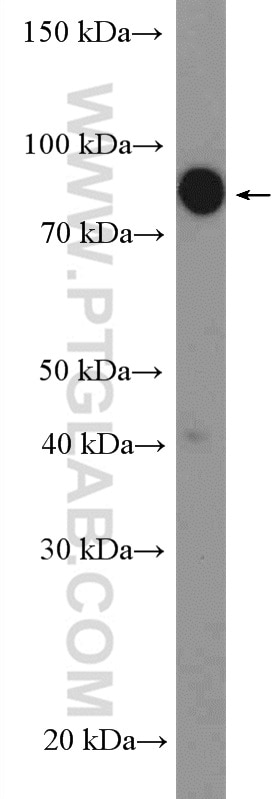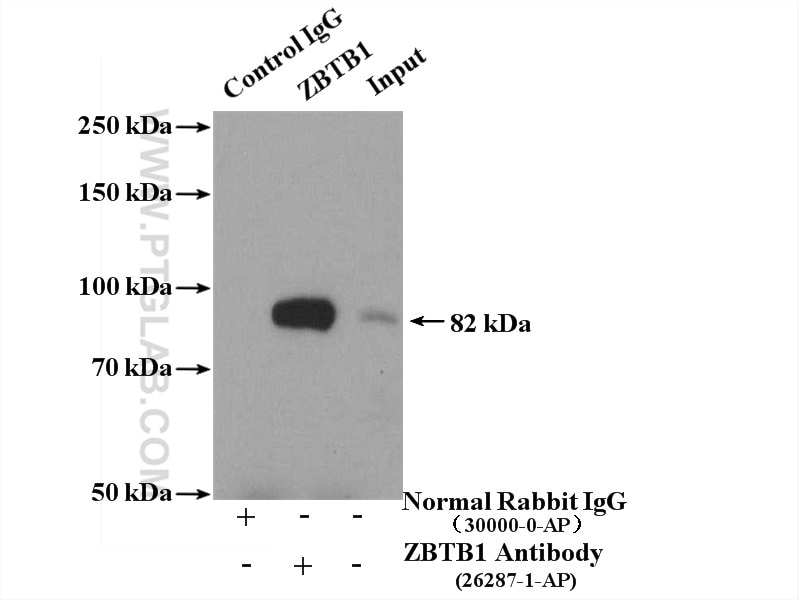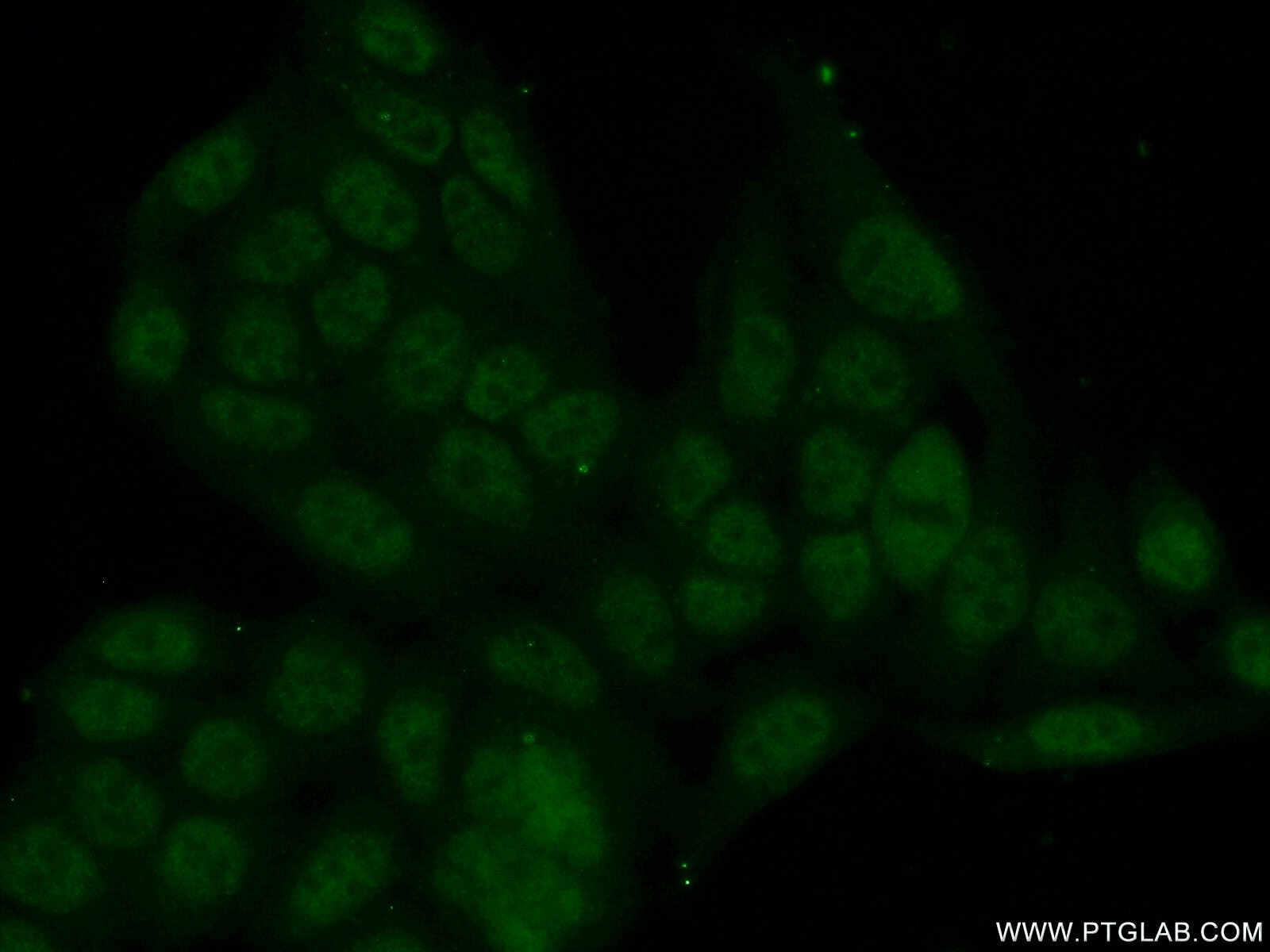- Featured Product
- KD/KO Validated
ZBTB1 Polyclonal antibody
ZBTB1 Polyclonal Antibody for WB, IP, IF, ELISA
Host / Isotype
Rabbit / IgG
Reactivity
human and More (1)
Applications
WB, IP, IF, ELISA
Conjugate
Unconjugated
Cat no : 26287-1-AP
Synonyms
Validation Data Gallery
Tested Applications
| Positive WB detected in | HeLa cells |
| Positive IP detected in | HeLa cells |
| Positive IF detected in | HeLa cells |
Recommended dilution
| Application | Dilution |
|---|---|
| Western Blot (WB) | WB : 1:200-1:1000 |
| Immunoprecipitation (IP) | IP : 0.5-4.0 ug for 1.0-3.0 mg of total protein lysate |
| Immunofluorescence (IF) | IF : 1:50-1:500 |
| It is recommended that this reagent should be titrated in each testing system to obtain optimal results. | |
| Sample-dependent, Check data in validation data gallery. | |
Published Applications
| KD/KO | See 1 publications below |
| WB | See 2 publications below |
Product Information
The immunogen of 26287-1-AP is ZBTB1 Fusion Protein expressed in E. coli.
| Tested Reactivity | human |
| Cited Reactivity | human, mouse |
| Host / Isotype | Rabbit / IgG |
| Class | Polyclonal |
| Type | Antibody |
| Immunogen | ZBTB1 fusion protein Ag23492 |
| Full Name | zinc finger and BTB domain containing 1 |
| Observed Molecular Weight | 82 kDa |
| GenBank Accession Number | BC050719 |
| Gene Symbol | ZBTB1 |
| Gene ID (NCBI) | 22890 |
| RRID | AB_2880463 |
| Conjugate | Unconjugated |
| Form | Liquid |
| Purification Method | Antigen affinity purification |
| Storage Buffer | PBS with 0.02% sodium azide and 50% glycerol pH 7.3. |
| Storage Conditions | Store at -20°C. Stable for one year after shipment. Aliquoting is unnecessary for -20oC storage. 20ul sizes contain 0.1% BSA. |
Protocols
| Product Specific Protocols | |
|---|---|
| WB protocol for ZBTB1 antibody 26287-1-AP | Download protocol |
| IF protocol for ZBTB1 antibody 26287-1-AP | Download protocol |
| IP protocol for ZBTB1 antibody 26287-1-AP | Download protocol |
| Standard Protocols | |
|---|---|
| Click here to view our Standard Protocols |
Publications
| Species | Application | Title |
|---|---|---|
Cell Metab ZBTB1 Regulates Asparagine Synthesis and Leukemia Cell Response to L-Asparaginase.
| ||
iScience RBFOX2 regulated EYA3 isoforms partner with SIX4 or ZBTB1 to control transcription during myogenesis |




